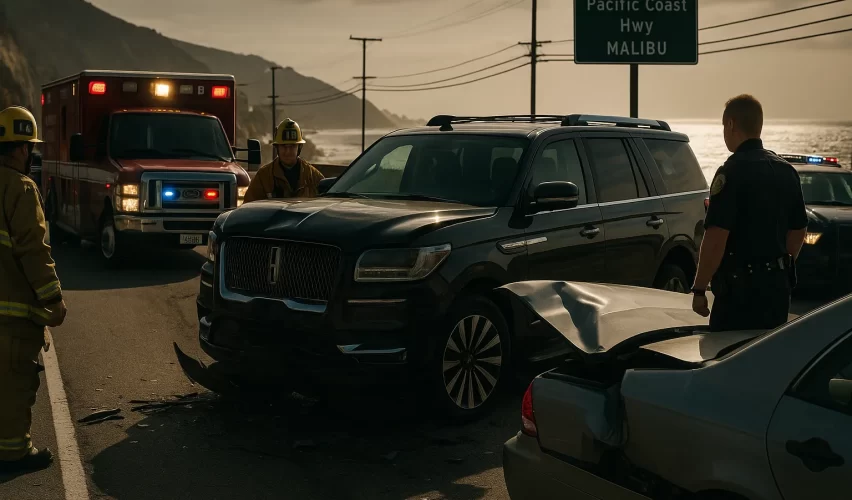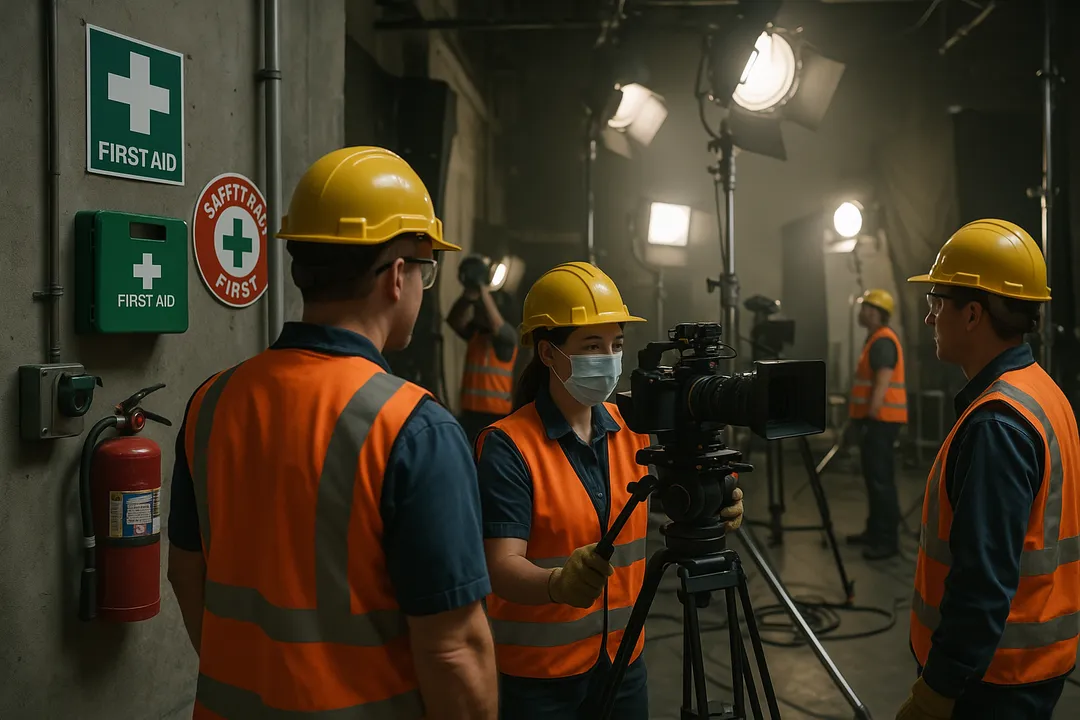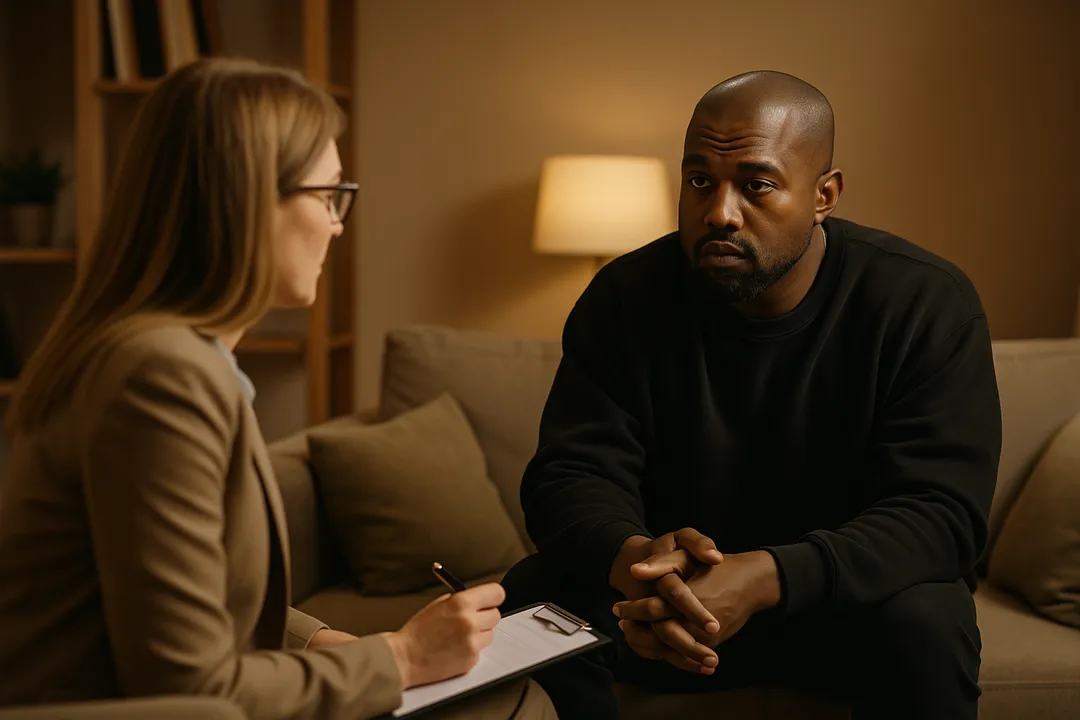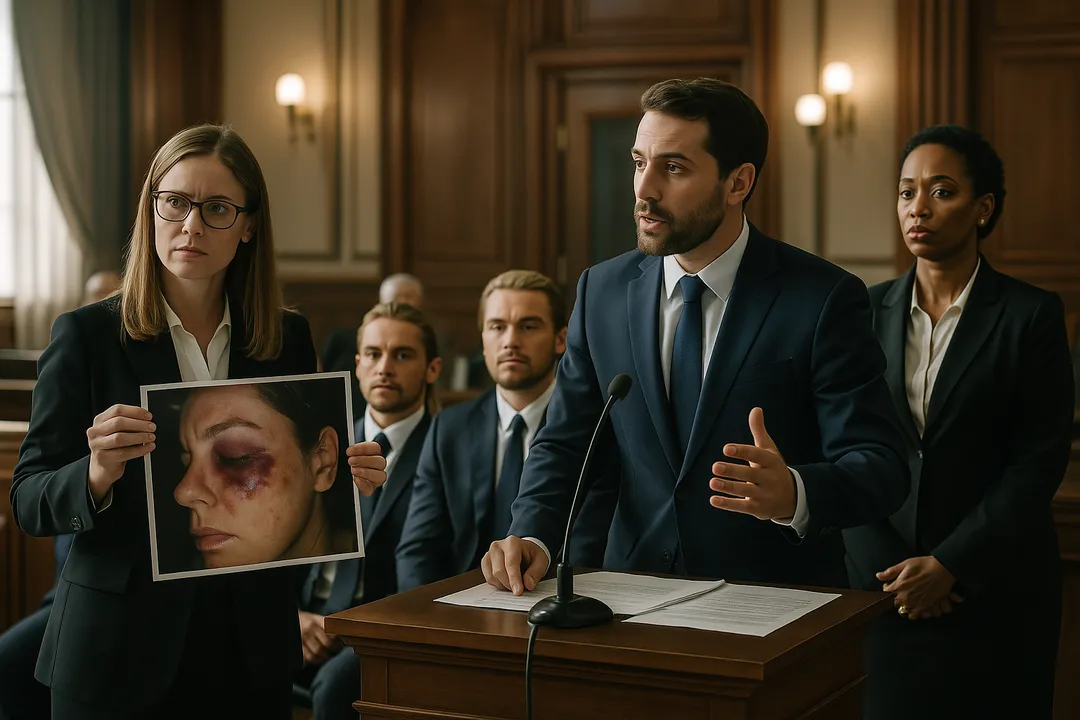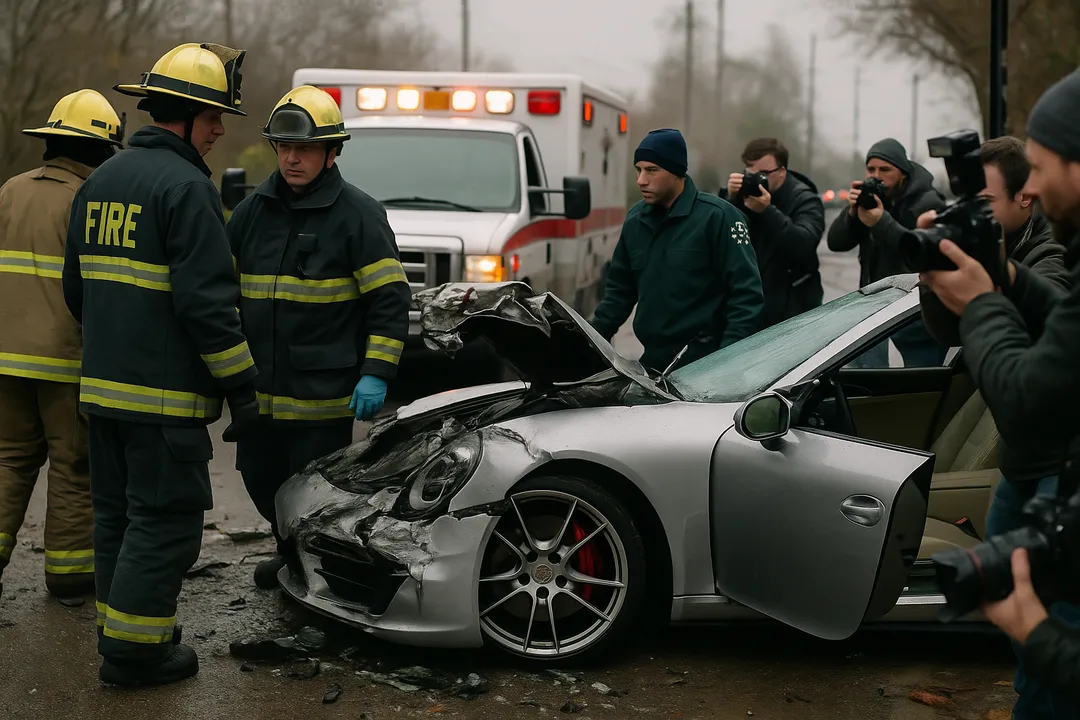The rock and roll world was shaken on October 7, 2024, when KISS legend Gene Simmons, 76, was hospitalized following a serious car crash on the Pacific Coast Highway in Malibu, California. The incident, which occurred when Simmons reportedly passed out behind the wheel of his black Lincoln Navigator and collided with a parked vehicle, has raised significant questions about celebrity health emergencies, driving safety for aging performers, and the legal implications of medical-related traffic accidents.
This high-profile crash represents more than just another celebrity accident—it highlights the complex intersection of aging, health management, and public safety that affects many performers in their later years. As we’ve explored in our analysis of Celebrity Health Scares That Shook the World in 2025, medical emergencies involving public figures often reveal broader issues about health monitoring, emergency response protocols, and the unique challenges faced by celebrities managing health conditions while maintaining active careers.
The incident has also sparked discussions about the legal responsibilities of drivers experiencing medical emergencies, insurance implications for celebrity accidents, and the role of family members in monitoring the health and safety of aging performers. Gene Simmons’ wife, Shannon Tweed, has publicly attributed the incident to his chronic dehydration and aversion to drinking water, adding another layer to the medical and legal considerations surrounding this case.
The Incident: What Happened on Pacific Coast Highway
On Tuesday, October 7, 2024, at approximately 1:00 PM Pacific Time, Los Angeles County Sheriff’s deputies responded to a call about a traffic collision in the 25000 block of Pacific Coast Highway in Malibu [1]. The incident involved Gene Simmons’ black Lincoln Navigator SUV striking a parked vehicle after the KISS bassist reportedly experienced a medical emergency while driving.
According to official reports from the Los Angeles County Sheriff’s Department, Simmons told authorities that he had “passed out” or “fainted” just before the collision occurred [2]. The crash scene, located on one of California’s most scenic but potentially dangerous coastal highways, required immediate emergency response from multiple agencies including paramedics, fire department personnel, and law enforcement officers.
Witnesses at the scene described seeing the large SUV veer off course before striking the parked car with significant force. The impact was substantial enough to require towing for both vehicles, though fortunately, no other individuals were injured in the collision. Emergency responders quickly assessed Simmons’ condition and determined that immediate medical attention was necessary, leading to his transport to a local Malibu hospital for evaluation and treatment.
The Pacific Coast Highway, known for its winding curves and heavy traffic, has been the site of numerous celebrity accidents over the years. The combination of scenic distractions, challenging driving conditions, and high-profile residents makes this stretch of road particularly noteworthy for celebrity-related incidents. As we’ve documented in our comprehensive analysis of Celebrity Car Crashes and Legal Consequences, the PCH presents unique challenges for both celebrities and law enforcement when accidents occur.
The immediate response to Simmons’ accident demonstrated the coordinated emergency protocols that have been developed for high-profile incidents in the Malibu area. The rapid deployment of medical personnel and the efficient handling of the scene helped ensure that Simmons received prompt medical attention while minimizing traffic disruption and media interference.
Medical Emergency Behind the Wheel: Understanding the Causes
The medical emergency that led to Gene Simmons’ car crash has been attributed by his family to chronic dehydration, a condition that his wife Shannon Tweed has publicly discussed as an ongoing health concern [3]. According to Tweed, Simmons has a well-documented aversion to drinking water, preferring other beverages, which has led to recurring dehydration issues that can cause fainting spells and other medical complications.
Dehydration in elderly individuals can have serious consequences, particularly when it leads to sudden loss of consciousness while operating a vehicle. Medical experts explain that severe dehydration can cause blood pressure drops, electrolyte imbalances, and reduced blood flow to the brain, all of which can result in fainting episodes. For a 76-year-old individual like Simmons, these risks are amplified by age-related changes in the body’s ability to regulate fluid balance and respond to dehydration stress.
The incident highlights broader concerns about aging celebrities and their ability to safely operate vehicles, particularly when underlying health conditions may not be adequately managed or monitored. As we’ve explored in our coverage of Mental Health Injuries and Celebrity Recovery, the intersection of physical health, mental well-being, and public safety creates complex challenges for aging performers and their families.
Medical professionals emphasize that chronic dehydration is a preventable condition that can be effectively managed through proper hydration habits, medical monitoring, and lifestyle adjustments. However, for celebrities with demanding schedules, travel requirements, and personal preferences that may conflict with optimal health practices, maintaining proper hydration can become a significant challenge that requires active management and family support.
The legal implications of medical emergencies while driving are complex and vary by jurisdiction. In California, drivers who experience sudden medical emergencies that lead to accidents may not be held criminally liable if the emergency was unforeseeable and unavoidable. However, if there is evidence that the driver knew or should have known about their medical condition and the risk it posed to public safety, liability issues can become more complicated.
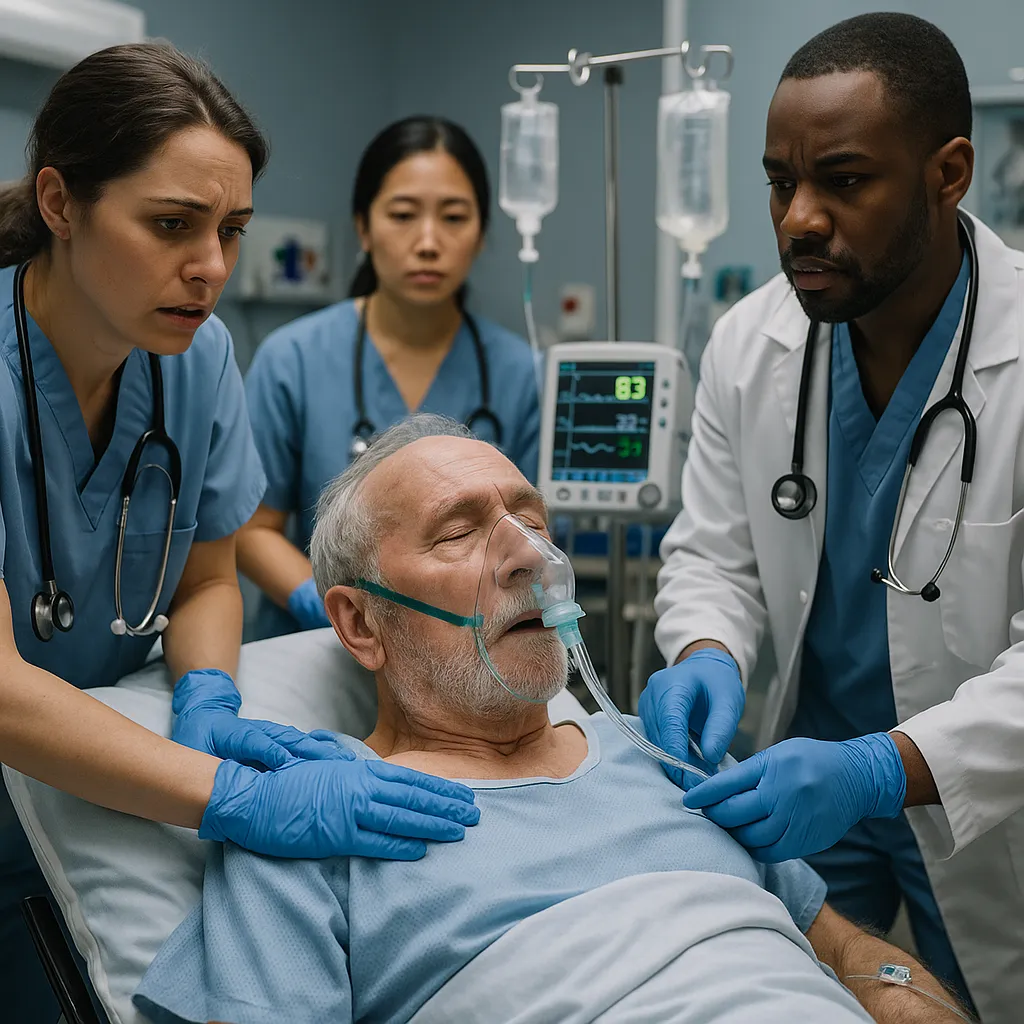
Hospital Treatment and Recovery Process
Following the crash, Gene Simmons was transported to a local Malibu hospital where he underwent comprehensive medical evaluation and treatment for his condition [4]. Hospital sources, while maintaining patient privacy, confirmed that Simmons was conscious and responsive upon arrival and that his injuries from the crash were relatively minor compared to the underlying medical issues that caused the incident.
The medical team’s primary focus was addressing the dehydration that led to the fainting episode, which typically involves intravenous fluid replacement, electrolyte monitoring, and assessment of any underlying conditions that may have contributed to the severe dehydration. For elderly patients, this process requires careful monitoring to ensure that rapid rehydration doesn’t cause additional complications such as fluid overload or electrolyte imbalances.
Simmons’ treatment also included evaluation for any injuries sustained during the crash, including potential head trauma, neck strain, or other impact-related injuries. While reports indicate that his physical injuries were minor, the medical team would have conducted thorough neurological assessments to rule out concussion or other brain injuries that might not be immediately apparent.
The recovery process for elderly individuals following medical emergencies and car crashes often involves multiple specialists and extended monitoring periods. Simmons’ medical team likely included emergency physicians, cardiologists, neurologists, and geriatric specialists working together to address both the immediate crisis and the underlying health issues that contributed to the incident.
Hospital discharge planning for celebrities involves additional considerations including media management, security protocols, and coordination with family members and management teams. The goal is to ensure proper medical care while protecting patient privacy and managing public interest in the celebrity’s condition and recovery progress.
Legal Implications and Liability Considerations
The legal ramifications of Gene Simmons’ car crash extend beyond the immediate incident to encompass broader questions about driver responsibility, medical fitness to drive, and liability in cases involving medical emergencies [5]. California law recognizes that sudden medical emergencies can absolve drivers of liability in certain circumstances, but the application of this defense depends on specific factors including the foreseeability of the medical event and the driver’s knowledge of their condition.
In Simmons’ case, the fact that his family has acknowledged his chronic dehydration and aversion to drinking water could potentially complicate any legal defense based on sudden medical emergency. If it can be established that Simmons knew or should have known about his tendency to experience dehydration-related fainting spells, questions might arise about his decision to continue driving without addressing the underlying health issue.
The involvement of a parked vehicle in the crash also creates potential civil liability issues, as the owner of the damaged vehicle may seek compensation for property damage, inconvenience, and related expenses. Celebrity car crashes often result in higher settlement amounts due to the perceived ability of famous individuals to pay substantial damages, even when the legal liability may be limited.
Insurance considerations for celebrity car crashes involve complex policies that often include higher coverage limits, specialized provisions for high-profile individuals, and coordination between multiple insurance carriers. Simmons’ auto insurance policy likely includes substantial liability coverage, but the specific terms and conditions governing medical emergency-related accidents would need to be carefully reviewed to determine coverage obligations.
The incident also raises questions about whether celebrities with known medical conditions should be subject to additional driving restrictions or monitoring requirements. While current law generally doesn’t require special licensing or testing for individuals with conditions like chronic dehydration, some legal experts argue that high-profile individuals have additional responsibilities to ensure public safety given their resources and access to medical care.
Celebrity Health Management and Public Safety
Gene Simmons’ car crash highlights the broader issue of celebrity health management and its intersection with public safety responsibilities. As public figures age and develop health conditions, the challenge of balancing personal autonomy with public safety becomes increasingly complex, particularly when celebrities have the resources to address health issues but may choose not to do so for personal or lifestyle reasons.
The case illustrates how seemingly minor health issues like chronic dehydration can have serious public safety implications when they lead to medical emergencies while driving. For celebrities with demanding schedules, travel requirements, and lifestyle preferences that may conflict with optimal health practices, the responsibility for health management often extends beyond the individual to include family members, medical professionals, and management teams.
As we’ve documented in our analysis of Celebrity Lawsuit Trends in Injury Cases, the legal system is increasingly recognizing that celebrities may have enhanced responsibilities for managing health conditions that could affect public safety. This trend reflects growing awareness that fame and resources create both opportunities and obligations for maintaining health and safety standards.
The role of family members in monitoring and managing celebrity health has become increasingly important as performers age and develop chronic conditions. Shannon Tweed’s public acknowledgment of Simmons’ dehydration issues demonstrates both the challenges and responsibilities that family members face in supporting aging celebrities while respecting their autonomy and privacy.
Medical professionals working with celebrities face unique challenges in providing care that balances optimal health outcomes with the practical realities of celebrity lifestyles. The development of specialized protocols for celebrity health management, including preventive care, emergency response planning, and family coordination, has become an important aspect of entertainment industry medical practice.
![]()
Impact on KISS and Music Career
The car crash and hospitalization have raised questions about the impact on Gene Simmons’ ongoing career with KISS and his various business ventures. At 76, Simmons remains an active performer and entrepreneur, but the incident has highlighted concerns about his ability to maintain the demanding schedule required for touring, recording, and business activities.
KISS has been in the midst of their “End of the Road” farewell tour, which has been extended multiple times due to popular demand and various scheduling considerations. The band’s management has indicated that Simmons’ health incident will not affect upcoming tour dates, but the crash has prompted discussions about contingency planning and health monitoring protocols for aging performers.
The incident also affects Simmons’ numerous business ventures, including his restaurant chains, merchandise companies, and media appearances. As a highly visible entrepreneur and brand ambassador, any health concerns can have significant implications for business partnerships, insurance coverage, and public confidence in his various enterprises.
From a career perspective, the crash represents a reminder of the physical demands and risks associated with maintaining an active entertainment career into one’s seventies. The incident has prompted discussions within the music industry about health monitoring, emergency preparedness, and support systems for aging performers who continue to tour and perform.
The public nature of the incident has also created opportunities for Simmons to address health and safety issues publicly, potentially using his platform to educate fans about the importance of proper hydration, medical monitoring, and responsible health management. This type of public health advocacy has become increasingly common among celebrities who experience health crises.
Media Coverage and Public Response
The media coverage of Gene Simmons’ car crash has demonstrated the intense public interest in celebrity health emergencies and the challenges of balancing news reporting with privacy considerations. Major entertainment news outlets, including E! Online, People Magazine, and Rolling Stone, provided extensive coverage of the incident while attempting to respect medical privacy and family concerns [1][2][4].
The public response to the crash has been largely supportive, with fans expressing concern for Simmons’ health and well-being while also acknowledging relief that no one else was injured in the incident. Social media platforms have been filled with messages of support from fans, fellow musicians, and entertainment industry professionals, demonstrating the widespread affection and respect for the KISS legend.
As we’ve analyzed in our coverage of The Impact of Social Media on Celebrity Injury News Coverage, the rapid spread of information about celebrity accidents through social media creates both opportunities and challenges for managing public communication about health emergencies. The immediate availability of information can help reassure fans and stakeholders, but it can also lead to speculation and misinformation that complicates recovery and legal processes.
The incident has also generated discussions about aging celebrities and driving safety, with many commentators using Simmons’ crash as an opportunity to discuss broader issues about medical fitness to drive, family responsibilities for monitoring elderly relatives, and the importance of addressing chronic health conditions before they lead to emergencies.
Media coverage has also focused on the role of Shannon Tweed in managing Simmons’ health and her public acknowledgment of his chronic dehydration issues. This aspect of the story has highlighted the important role that family members play in celebrity health management and the challenges they face in balancing support with respect for autonomy.
Insurance and Financial Implications
The financial implications of Gene Simmons’ car crash extend beyond immediate medical expenses and property damage to encompass broader insurance considerations, potential liability exposure, and business impact assessments. Celebrity car crashes often involve complex insurance arrangements that include multiple policies, high coverage limits, and specialized provisions for high-profile individuals.
Simmons’ auto insurance policy likely includes substantial liability coverage designed to protect against claims arising from accidents, but the specific terms governing medical emergency-related incidents would need to be carefully reviewed. Insurance companies typically investigate whether medical conditions were known or should have been known by the insured, as this can affect coverage decisions and premium calculations.
The property damage to both Simmons’ Lincoln Navigator and the parked vehicle involved in the crash represents a relatively minor financial consideration given his substantial net worth, but the incident could affect future insurance premiums and coverage availability. Insurance companies often reassess risk profiles following accidents, particularly when medical conditions are involved.
Business interruption considerations include potential impacts on KISS tour dates, merchandise sales, and Simmons’ various business ventures. While the immediate health impact appears to be manageable, any extended recovery period or ongoing health concerns could affect his ability to fulfill professional obligations and maintain business relationships.
The incident also highlights the importance of comprehensive health and disability insurance for aging celebrities who continue to maintain active careers. The entertainment industry has developed specialized insurance products designed to address the unique risks and financial exposures faced by high-profile performers, but the effectiveness of these policies depends on proper risk assessment and coverage selection.
Lessons for Celebrity Health and Safety
Gene Simmons’ car crash provides important lessons for celebrity health management, family support systems, and public safety considerations that extend beyond the immediate incident to inform broader discussions about aging performers and their responsibilities. The case demonstrates how seemingly minor health issues can have serious consequences when they intersect with activities like driving that affect public safety.
The importance of proactive health management becomes particularly critical for celebrities who maintain active careers into their later years. Regular medical monitoring, preventive care, and lifestyle modifications can help identify and address health issues before they lead to emergencies. For celebrities with demanding schedules and lifestyle preferences that may conflict with optimal health practices, developing comprehensive health management plans becomes essential.
Family involvement in celebrity health management has proven crucial in this case, with Shannon Tweed’s awareness of Simmons’ dehydration issues enabling rapid response and appropriate medical care. The incident highlights the importance of family members being educated about health risks, emergency procedures, and their role in supporting celebrity health and safety.
The case also demonstrates the value of emergency preparedness planning for celebrities and their families. Having established protocols for medical emergencies, including emergency contacts, medical information, and communication strategies, can help ensure rapid and appropriate response when incidents occur.
From a public safety perspective, the incident reinforces the importance of responsible decision-making about driving when health conditions may pose risks. While the law recognizes that sudden medical emergencies can occur without warning, individuals with known health issues have responsibilities to manage those conditions appropriately and make informed decisions about activities that could affect public safety.
Conclusion
Gene Simmons’ car crash on Pacific Coast Highway represents more than just another celebrity accident—it serves as a case study in the complex intersection of celebrity health management, public safety, and legal responsibility. The incident highlights the unique challenges faced by aging performers who continue to maintain active careers while managing health conditions that could affect their safety and the safety of others.
The crash has demonstrated the importance of proactive health management, family support systems, and emergency preparedness planning for celebrities and their families. Shannon Tweed’s acknowledgment of Simmons’ chronic dehydration issues and the family’s rapid response to the emergency illustrate both the challenges and responsibilities that come with supporting aging celebrities.
From a legal perspective, the incident raises important questions about driver responsibility, medical fitness to drive, and the application of sudden medical emergency defenses in cases involving known health conditions. The outcome of any legal proceedings related to the crash could have implications for how similar cases are handled in the future.
The public response to Simmons’ crash has been largely supportive, reflecting the widespread affection and respect for the KISS legend while also generating important discussions about aging celebrities, health management, and public safety. The incident has provided an opportunity for public education about the importance of proper hydration, medical monitoring, and responsible health management.
As Gene Simmons continues his recovery and returns to his various professional activities, the lessons learned from this incident will likely inform both his personal health management and broader discussions within the entertainment industry about supporting aging performers. The case serves as a reminder that celebrity status brings both privileges and responsibilities, particularly when it comes to health and safety considerations that affect not just the individual but the broader public.
The incident ultimately reinforces the importance of taking health conditions seriously, regardless of how minor they may seem, and the critical role that family members, medical professionals, and support systems play in maintaining celebrity health and safety. As the entertainment industry continues to grapple with an aging population of performers, the lessons from Gene Simmons’ experience will likely inform future approaches to celebrity health management and public safety protocols.
Explore additional resources on Gene Simmons, KISS Rocker, Hospitalized After Car Crash – E! Online, Gene Simmons Breaks Silence After Car Crash, Gene Simmons Crashed His Lincoln Navigator On PCH, And His Wife Blames His Aversion To Drinking Water – Jalopnik, Gene Simmons Recovering After Car Crash in Malibu – Rolling Stone, and KISS rock star Gene Simmons recovering after Malibu crash – NBC News.


